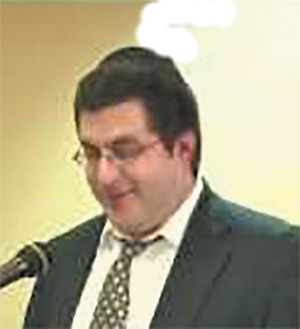
Every year, I try to write about the Ig Nobel Prizes—a spoof of the Nobel Prizes given for scientific achievements that sound crazy—and we laugh, but the truth is that these are very real achievements, for which the researchers win very real trophies, as well as a trillion Zimbabwe dollars, which comes out to just under two American dollars. Apparently, Zimbabwe dollars are kind of like when you want to give your kids incentives to do chores, so you put your picture on a piece of paper and call it a Schmutter dollar.
“Well, how many Schmutter dollars are worth a U.S. dollar?”
“I don’t know. A trillion? I think we actually devalued the paper they’re printed on.”
This is not to say that these scientists’ research is not important. Most of them are either trying to solve real problems, or the research they’re doing is just the first step of something bigger.
For example, the Prize for Chemistry went to scientists in Australia and the U.S. for inventing a way to partially un-boil an egg.
That’s great, because sometimes I want a soft-boiled egg, and I put some eggs in a pot and forget about them. Then I come back and it’s bubbling, and I’m like, “How long has this been bubbling?” I wish bubbling was louder. Like popcorn.
That would be terrifying.
As you can guess, this research has exciting implications in the field of Pesach cooking.
The reason un-boiling an egg is difficult is that when you boil an egg, the proteins end up in a tangled mass. So to reverse the effect, you’d have to untangle them. But how do you do that?
So in the past, scientists undid the tangle by throwing out the egg and secretly replacing it with a new egg. But the purpose of the research was to figure out how to do it without tossing eggs, because the price of eggs keeps going up by millions of Zimbabwe dollars.
Turns out you need a whole thing called a Vortex Fluid Device, which is not available in most kitchens, and is way more expensive than throwing out eggs, unless you do that a lot. The device spins the egg really fast, and the sheer force causes the proteins to un-bond and revert back to liquid form.
The application the researchers are actually going for here, using this process, is to help treat certain diseases by, I guess, spinning the patients around. Also they’re saying they can do something with antibodies.
Meanwhile, the prize for Literature went to researchers in five different countries for discovering that the word “Huh?” (or something like it) seems to exist in every language.
Apparently, not knowing what people are talking about is universal, going all the way back to the Dor Haflagah. In fact, I bet that was the first word that bridged the language gap, before everyone went off and founded countries named after themselves.
On the other hand, the scientists have only studied 41 languages so far. Out of 7,000. So this claim might not be true. But it’s good to know that wherever we go in the world, we can make people understand that we have no idea what they’re talking about.
The prize for Diagnostic Medicine went to scientists in several countries for determining a new way to diagnose if a patient has appendicitis.
It turns out that appendicitis is very hard to diagnose. Most people can’t even figure out where the appendix is. And it turns out that appendicitis is extremely time sensitive.
So these scientists determined, probably by accident, that appendicitis can be diagnosed on the way to the hospital by the amount of pain the patient experiences when he’s driven over speed bumps.
Why on earth do they keep putting speed bumps near hospitals?
This was determined in a study in which they drove 64 patients to the hospital and specifically hit every pot hole and speed bump on the way there. Every patient who said, “Ow!” was labeled “speed bump positive.”
“I’m sorry, Ma’am; your husband is speed bump positive.”
“Oh, no! Is he gonna make it?”
“Slowly.”
They probably got pulled over a few times.
Scientist #1: “Sorry, officer; we’re doing research.”
Patient: “Can you bring me to a hospital already?”
Scientist #1: “Not yet. We’re going to drive down a flight of stairs now.”
Scientist #2: “Then we’re going to go around a traffic circle really fast and see if we can get your appendix to break apart on its own.”
Anyway, it turns out that, of the 34 patients that later tested as having acute appendicitis, 33 were speed bump positive. On the other hand, of the other 30 patients, 21 were speed bump positive. So basically, they discovered that if you’re in an ambulance, you’re probably speed bump positive.
But this research is very exciting, and the next step is to find out all the other things that can be diagnosed in the ambulance: whiplash, carsickness, hearing loss, obesity, decapitation, balance issues, labor and the tendency to keep hitting imaginary brakes.
By Mordechai Schmutter
Mordechai Schmutter is a freelance writer and a humor columnist for Hamodia, The Jewish Press and Aish.com, among others. He also has five books out and does stand-up comedy. You can contact him at MSchmutter@gmail.com.











